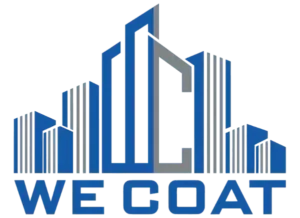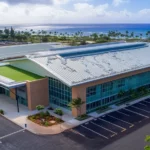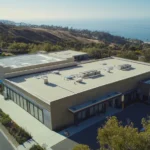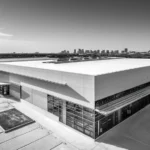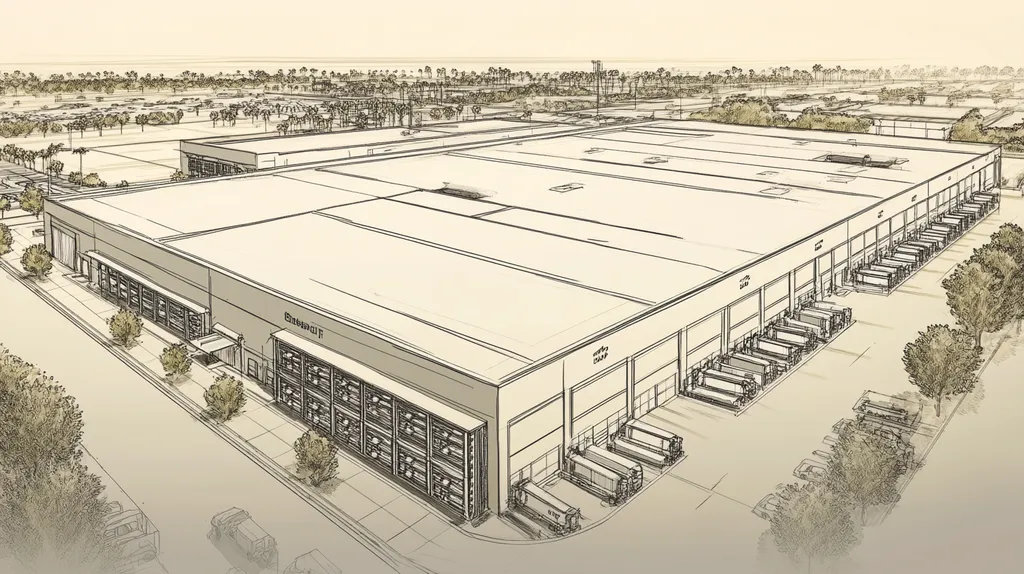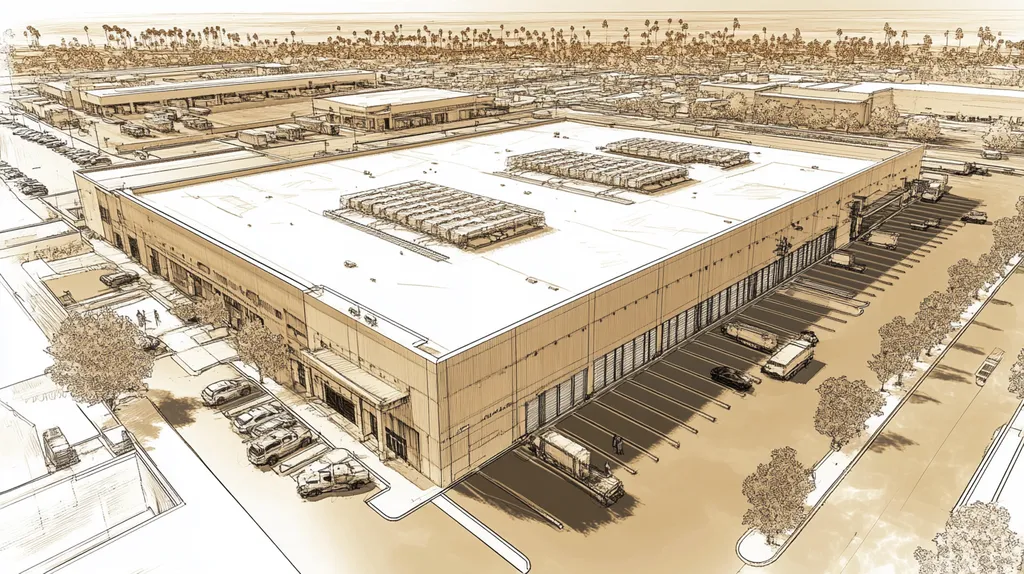Welcome to today’s Battle Royale featuring two roofing heavyweights: “Detective Drain Testing” in the east corner versus “Infrared Thermography” in the west!
Tonight’s showdown pits these contenders against each other across six punishing rounds designed to test every aspect of their performance for Commercial Roof Drainage Integrity.
At stake? Millions in potential costs, decades of building protection, and the critical performance demands of modern commercial and industrial facilities.
Our professional judging panel will evaluate each round on technical merit, real-world performance, and value delivery. After all six rounds, we’ll declare our ultimate champion.
Ladies and gentlemen, facility managers and building owners… it’s time to rumble!
ROUND 1: INITIAL COSTS & INSTALLATION
When evaluating commercial roof drainage integrity, the initial investment and implementation process can significantly impact a facility’s operational budget and maintenance schedule. Five distinct testing methods have historically dominated the industry, each with varying cost implications and complexity levels.
According to the Whole Building Design Guide, these methods include spray testing, flood testing, capacitance testing, nuclear metering, and infrared thermal imaging, with newer technologies continuing to emerge. (source: Whole Building Design Guide)
Material Expenses
Material costs represent a significant portion of any drainage testing investment. Detective drain testing requires basic equipment like dye markers, water sources, and collection tools, typically costing between $500-1,500 for a standard commercial roof.
Infrared thermography demands sophisticated thermal imaging cameras and specialized software, with equipment costs often exceeding $15,000. These devices require regular calibration and occasional updates to maintain accuracy.
The substantial difference in equipment investment makes detective drain testing more accessible for most facility budgets. For material expenses, detective drain testing holds the ADVANTAGE.
Installation Complexity
Setup requirements directly influence labor costs and project efficiency. Detective drain testing follows straightforward procedures that most roofing professionals can execute with minimal specialized training.
Infrared thermography demands precise environmental conditions and extensive technical expertise. Testing accuracy can be compromised by various factors, including electrically insulative materials between the membrane and overburden surface.
The simpler implementation process of detective drain testing reduces the potential for errors and delays. For installation complexity, detective drain testing claims the ADVANTAGE.
Project Timeline
Time efficiency impacts both direct costs and facility operations. Detective drain testing typically requires 4-8 hours for a standard commercial roof, allowing for same-day results and quick decision-making.
Infrared scanning often demands specific temperature conditions and multiple passes to ensure accuracy. The process frequently extends over several days, particularly when breaches haven’t allowed water to reach conductive deck areas.
The faster completion time of detective drain testing minimizes disruption to facility operations. For project timeline considerations, detective drain testing secures the ADVANTAGE.
ROUND 1 WINNER: Detective Drain Testing
ROUND 2: DURABILITY & LIFESPAN
The longevity of commercial roof drainage systems directly impacts building integrity and operational costs. Up to 40% of commercial roof failures stem from inadequate drainage assessment and maintenance, leading to structural damage, mold growth, and business disruption.
Understanding how different testing methods evaluate system durability allows facility managers to make informed decisions that protect their investments and prevent catastrophic failures.
Material Resistance
Material degradation in drainage systems can compromise roof integrity within 2-3 years without proper evaluation. Detective drain testing provides direct visual and physical assessment of material conditions, including membrane integrity, joint stability, and drain component wear.
Infrared thermography excels at identifying subsurface moisture accumulation but cannot directly assess material quality or degradation patterns. While valuable for detecting hidden issues, it provides limited insight into the physical condition of drainage components.
For comprehensive material evaluation capabilities, detective drain testing claims the ADVANTAGE.
System Design Integrity
The effectiveness of drainage design significantly influences system longevity and performance. Detective drain testing reveals real-world water flow patterns, helping identify design flaws like inadequate slopes or undersized components that compromise long-term functionality.
Infrared thermography can detect trapped moisture resulting from poor design but may miss critical flow pattern issues. However, it effectively identifies hidden ponding areas and moisture migration paths that indicate design weaknesses.
Given their complementary strengths in evaluating different aspects of design integrity, this category results in a TIE.
Maintenance Considerations
Regular maintenance extends drainage system lifespan by 40-60% when guided by accurate testing data. Detective drain testing provides clear, actionable insights for developing preventive maintenance schedules and identifying immediate repair needs.
While infrared thermography detects concealed issues requiring attention, its findings often necessitate additional investigation to determine specific maintenance requirements. This two-step process can delay critical repairs and increase maintenance costs.
The direct maintenance guidance provided by detective drain testing earns it the ADVANTAGE.
ROUND 2 WINNER: DETECTIVE DRAIN TESTING
ROUND 3: PERFORMANCE FACTORS
The performance of commercial roof drainage assessment methods directly impacts building longevity and operational safety. According to industry data, inadequate drainage testing leads to over $4 billion in water damage annually across commercial properties, with 40% of these incidents resulting in business disruption.
Proper evaluation methods can prevent catastrophic failures and protect valuable assets, making the choice between testing approaches a critical business decision. Modern facilities require testing solutions that balance accuracy, efficiency, and long-term reliability.
Detection Accuracy
Detection accuracy determines how effectively testing methods identify potential drainage issues before they become catastrophic failures. Detective drain testing provides direct visual confirmation of water flow patterns and immediate identification of surface-level drainage problems.
However, this method can miss subsurface issues and hidden moisture accumulation that often indicate developing drainage failures. The reliance on visible indicators limits its effectiveness in detecting early-stage problems that could lead to significant damage.
Infrared thermography excels at identifying both surface and subsurface moisture patterns, offering comprehensive detection capabilities. Its ability to locate hidden moisture migration paths and thermal anomalies provides crucial early warning of potential failures.
With superior detection capabilities across multiple failure modes, Infrared Thermography claims the ADVANTAGE.
Environmental Adaptability
Testing methods must perform reliably across varying weather conditions and building configurations. Detective drain testing becomes less effective during extreme temperatures and requires specific weather conditions for optimal results.
The method’s dependence on controlled water flow makes it challenging to implement during rain or freezing conditions. Additionally, results can be compromised by existing moisture from recent precipitation.
Infrared thermography maintains consistent performance across diverse weather conditions and can be conducted year-round. The technology’s ability to detect temperature differentials remains reliable regardless of ambient conditions.
Given its superior performance across varied environmental conditions, Infrared Thermography earns the ADVANTAGE.
Data Analysis Capabilities
The ability to analyze and document testing results impacts long-term maintenance planning and warranty compliance. Detective drain testing typically relies on manual documentation and visual observations, making it difficult to track subtle changes over time.
This traditional approach limits the ability to perform trend analysis or predict developing issues. The lack of digital documentation can also complicate warranty claims and maintenance records.
Infrared thermography generates detailed digital records, including thermal images and moisture mapping that can be analyzed over time. This data-driven approach enables predictive maintenance and provides clear documentation for warranty claims.
For its superior analytical and documentation capabilities, Infrared Thermography secures the ADVANTAGE.
ROUND 3 WINNER: Infrared Thermography
ROUND 4: MAINTENANCE REQUIREMENTS
The maintenance demands of commercial roof drainage systems directly impact building longevity and operational costs. Studies show that improper maintenance leads to 40% of all commercial roof failures, resulting in billions in preventable damage annually. Understanding the ongoing maintenance requirements of different testing methods helps facility managers make informed decisions that protect their investments.
Inspection Frequency
Detective drain testing requires quarterly visual inspections and physical testing to maintain system integrity. These frequent checks help identify developing issues before they become critical failures, but demand significant time investment from maintenance teams.
Each inspection involves testing multiple drainage points and documenting findings, typically requiring 4-6 hours of dedicated maintenance time. The manual nature of these inspections means they cannot be automated or streamlined without compromising accuracy.
Infrared thermography needs only bi-annual comprehensive scans to maintain effective monitoring. The advanced technology allows for rapid assessment of large areas, reducing the frequency of required inspections while maintaining high detection rates.
For inspection frequency considerations, Infrared Thermography claims the ADVANTAGE.
Equipment Upkeep
Detective drain testing equipment requires minimal maintenance beyond basic cleaning and storage. The simple tools used in this method – dyes, pressure meters, and collection devices – are durable and easily replaced when needed.
However, the method requires maintaining an inventory of consumable materials like dyes and testing solutions. These ongoing supply needs can impact maintenance budgets and require careful inventory management.
Infrared thermography cameras need annual calibration and software updates to maintain accuracy. While these specialized maintenance requirements are more complex, they occur less frequently and can be scheduled during off-peak periods.
For equipment upkeep requirements, Detective Drain Testing earns the ADVANTAGE.
Documentation Requirements
Detective drain testing relies heavily on manual record-keeping and physical documentation. Maintenance teams must carefully log each inspection, creating detailed reports of findings and recommendations.
This paper-based approach makes trend analysis difficult and can complicate warranty compliance tracking. Storage and retrieval of historical maintenance records often becomes cumbersome over time.
Infrared thermography generates digital records automatically during each scan. These electronic files provide comprehensive documentation that’s easily stored, analyzed, and shared across maintenance teams.
For documentation efficiency, Infrared Thermography secures the ADVANTAGE.
ROUND 4 WINNER: Infrared Thermography
ROUND 5: SUSTAINABILITY CREDENTIALS
Modern commercial roofing demands sustainable solutions that protect both buildings and the environment. With 40% of urban heat islands attributed to commercial roofing systems, choosing the right drainage assessment method impacts more than just building integrity – it affects community wellbeing and environmental compliance.
Sustainable drainage solutions can reduce a building’s environmental impact while extending system lifespan by up to 25%. As regulations tighten and energy costs rise, evaluation methods must adapt to address both performance and ecological concerns.
Environmental Impact
Each drainage assessment method carries distinct environmental implications. Understanding these impacts helps facility managers align building maintenance with sustainability goals while maintaining system integrity.
Detective drain testing requires significant water usage during evaluations, often consuming hundreds of gallons per test. This method also relies on chemical dyes that can impact water systems if not properly contained and disposed of.
Infrared thermography operates without water consumption or chemical agents, using only thermal imaging technology to detect issues. This non-invasive approach minimizes environmental impact while providing comprehensive drainage assessment.
For its resource-efficient approach, Infrared Thermography claims the ADVANTAGE.
Energy Efficiency
Drainage assessment methods can significantly impact a building’s overall energy performance. Proper evaluation helps identify areas where moisture accumulation compromises insulation effectiveness and increases energy consumption.
Detective drain testing focuses solely on water movement, missing crucial data about thermal performance and insulation integrity. This limited scope prevents comprehensive energy efficiency evaluation.
Infrared thermography simultaneously assesses drainage and thermal patterns, identifying areas where moisture affects insulation performance. This dual capability enables targeted improvements that enhance both drainage and energy efficiency.
For comprehensive energy performance assessment, Infrared Thermography earns the ADVANTAGE.
Long-term Sustainability
Sustainable drainage solutions must demonstrate long-term viability while meeting evolving environmental standards. Testing methods that support predictive maintenance and system optimization contribute to extended service life.
Detective drain testing provides immediate condition assessment but offers limited insight into developing issues that could impact long-term sustainability. The reactive nature of this approach can lead to premature system replacement.
Infrared thermography enables early detection of potential failures, supporting proactive maintenance that extends system lifespan. This preventive approach reduces material waste and replacement frequency.
For supporting sustainable system longevity, Infrared Thermography secures the ADVANTAGE.
ROUND 5 WINNER: Infrared Thermography
ROUND 6: SPECIALIZED APPLICATIONS
Specialized roofing applications present unique challenges that demand precise evaluation methods. Complex building designs, varied material interfaces, and diverse environmental conditions require testing approaches that can adapt while maintaining accuracy. The wrong choice of testing method in these situations can lead to overlooked issues that compromise roof integrity and increase repair costs by up to 300%.
Multi-Level Integration
Multi-level roofing systems require comprehensive testing methods that can evaluate drainage across varying elevations and transitions. Detective drain testing excels in these scenarios by allowing direct observation of water flow patterns between levels and through complex drainage paths.
The physical nature of detective testing enables technicians to trace water movement through entire systems, identifying potential failure points at level changes and material transitions. This hands-on approach proves especially valuable when evaluating stepped facades and terraced designs.
Infrared thermography struggles with multi-level systems due to varying material densities and thermal patterns at transitions. The technology often produces unclear readings at level changes, making it difficult to trace drainage paths accurately.
For multi-level integration assessment, Detective Drain Testing claims the ADVANTAGE.
Material Interface Assessment
Modern roofing systems often incorporate multiple materials with different drainage characteristics. Detective drain testing provides direct visual confirmation of how water moves across material transitions, helping identify potential weak points where different surfaces meet.
The method’s ability to simulate actual rainfall conditions reveals real-world performance at material interfaces. This practical approach highlights issues that might not appear under static conditions.
Infrared thermography faces significant limitations when evaluating material interfaces, particularly with electrically insulative materials between membrane layers. These technical constraints can mask critical drainage issues at transition points.
For material interface evaluation, Detective Drain Testing secures the ADVANTAGE.
Environmental Adaptability
Specialized applications must perform across diverse environmental conditions. Detective drain testing becomes challenging in extreme temperatures and requires specific weather conditions for optimal results.
The method’s dependence on controlled water flow limits its effectiveness during rain or freezing conditions. Additionally, existing moisture from recent precipitation can compromise test accuracy.
Infrared thermography maintains consistent performance regardless of ambient conditions and can operate effectively year-round. The technology’s ability to detect temperature differentials remains reliable across varied environments.
For environmental adaptability, Infrared Thermography earns the ADVANTAGE.
ROUND 6 WINNER: Detective Drain Testing
AND THE WINNER IS…
After six grueling rounds of technical evaluation, we have our verdict! With a score of 3-2-1, INFRARED THERMOGRAPHY claims the championship belt in this elite drainage integrity showdown!
The champion dominated with superior detection accuracy, environmental adaptability, and sustainability credentials. Its ability to identify hidden moisture patterns while generating detailed digital documentation proved decisive in securing victory.
But don’t count Detective Drain Testing out! This veteran contender showed impressive strength in specialized applications, particularly with multi-level systems and material interface assessment. When budgets are tight or direct visual confirmation is paramount, Detective Drain Testing remains a formidable choice.
IMPORTANT NOTICE: Every commercial property presents unique challenges that can impact testing effectiveness. Local climate conditions, building design characteristics, and specific operational requirements all play crucial roles in determining the optimal assessment method. This analysis provides general guidance but cannot account for all variables. Always consult qualified roofing professionals who can evaluate your specific situation before making final decisions.
Ladies and gentlemen, in the high-stakes arena of commercial roof drainage, victory goes not to those who blindly follow the champion, but to those who strategically match their building’s specific needs with the right contender’s strengths. Choose wisely – your building’s future depends on it!
FREQUENTLY ASKED QUESTIONS
Q. What are the initial costs for assessing commercial roof drainage integrity?
A. The costs for drainage assessment methods can vary greatly. Detective drain testing is typically more accessible, with costs ranging from $500 to $1,500. In contrast, infrared thermography requires advanced thermal imaging technology, leading to expenses often exceeding $15,000, making it less budget-friendly for many facilities.
Q. How do I assess durability in my commercial roof drainage system?
A. When evaluating durability, it is crucial to choose the right testing approach. Detective drain testing offers direct physical assessment of materials, helping to identify wear and structural issues. Meanwhile, infrared thermography can detect subsurface moisture but may not provide insights into material conditions, making it less comprehensive.
Q. Which method performs better for commercial roof drainage assessment?
A. The performance of testing methods depends on the specific needs of your drainage system. While infrared thermography excels in detecting hidden moisture and thermal issues, detective drain testing provides immediate observation of surface-level problems. Each method has strengths, and the best choice depends on your assessment goals.
Q. How often should I maintain my commercial roof drainage system?
A. Regular maintenance is crucial to avoid costly failures. Detective drain testing requires quarterly inspections, ensuring ongoing integrity, whereas infrared thermography typically mandates biannual scans. Establishing a consistent schedule tailored to your method helps catch issues early and maintain system health.
Q. What environmental impacts should I consider when assessing commercial roofs?
A. Assessing environmental impact involves evaluating resource use and emissions. Detective drain testing may require significant water consumption and chemical agents. Conversely, infrared thermography utilizes non-invasive technology that minimizes ecological effects, making it a more sustainable choice for eco-conscious facilities.
Q. How do specialized roofing applications affect drainage assessment?
A. Specialized roofing systems often introduce unique challenges. Detective drain testing shines in these scenarios, allowing direct observation of water flows in complex designs. Infrared thermography may struggle with variable thermal patterns, potentially leading to inaccurate assessments in complex environments.
Q. What should I know before choosing a drainage testing method?
A. Before selecting a drainage testing method, consider factors like cost, durability assessment capabilities, and the specific needs of your roof. Each method has unique advantages and limitations. Evaluating your facility’s aesthetics, environmental goals, and maintenance schedules is vital to make an informed choice.
